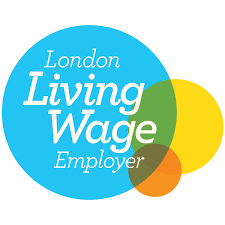Rishi Sunak described his March Budget as meeting the moment of challenge and change currently being faced by the country.
The Budget contained a series of measures which, according to Mr Sunak, are part of his mission to do whatever it takes to protect the jobs and livelihoods of the British people.
Some of the measures announced in the Budget were related to the government’s Job Retention scheme, commonly known as furlough. The furlough scheme enables companies to keep their employees and pay them, even if the business has been forced to close by Covid restrictions. It is estimated the furlough scheme has so far protected over 11 million jobs.
In this article we outline the furlough measures announced in the budget, and explain how they affect you if you are eligible to be on furlough.
We will look at:
- What changes to furlough were announced in the Budget.
- What you can expect to happen for the rest of the furlough scheme.
- What you are allowed to do if you are on furlough.
What changes to furlough were announced in the Budget?
The main change announced in the Budget was that the furlough scheme, which had been due to end in April, will now be extended until the end of September.
For the millions of people on furlough this means they will continue to receive 80% of their pay, up to a maximum of £2500 per month. This will be funded completely by the state until the end of June, although employers have to cover any pension and National Insurance costs.
From July onwards, employers will be asked to start contributing towards the 80% pay of their employees. For the month of July, the government will pay 70%, and employers the remaining 10%. In August and September, the government contribution reduces to 60%, and employers will pay 20%.
Employers across the UK and from any business sector - including charitable and not-for-profit - can begin to use the furlough scheme even if they have not used it so far. It can be applied to any employee: full-time, part-time, agency, flexible or zero hour contracts. However, to be eligible for furlough claims up until 30th April, an employee must have been on the payroll on or before 30th October 2020.
What can you expect to happen for the rest of the furlough scheme?
If you continue to be fully furloughed until the end of September, you can expect 80% of your normal salary during this time.
You can also be partially furloughed. For example, if your employer has enough work to employ you for a few hours then you can work part-time, be paid your normal rate for those hours, and continue to receive your 80% furlough pay for the hours you are not working.
If you have either been made redundant or have voluntarily left your job since 23rd September 2020, you are eligible to be rehired and furloughed until the end of April, if your employer agrees. If you are likely to be out of a job because of the pandemic, it is worth checking with them if they may need you back now restrictions are beginning to ease.
However, to continue to be eligible for furlough pay from May, you would need to be on payroll on 2nd March 2021. This means there is a window of opportunity for you to get your job back and be furloughed till the end of April at the latest, then be paid for your normal working hours again from early May. If you work in the hospitality industry, this could be a way of easing back into the job as the sector gradually begins to re-open.
What are you allowed to do if you are on furlough?
As mentioned above, you can work part time for your employer whilst on furlough. But if you do this, you must be paid your normal wage by your employer for the hours you are working, and must not do any work for your employer during the time you are receiving furlough pay.
You may be able to do paid work elsewhere during your furlough time, as long as your employment contract permits this. You are also free to do voluntary work during this time if you want to do so.
If you are unable to work part time elsewhere or to volunteer during furlough, it could be worth taking on some kind of project to fill the time and to keep your mind active before you go back to work again. For example, a home improvement project, learning a new skill, or taking up a sporting challenge.
It is also a good idea to keep in touch with the company and your colleagues during this time. This can help you to continue to feel connected to them, and can make the transition back into work much easier when the time comes.
If you need any additional financial assistance during the remainder of furlough, then Fair Finance is here to help. As a direct lender, we offer financial advice and a range of affordable personal loans, providing a fair alternative to payday loans and other predatory lenders.
Check back here soon for more financial and lifestyle information from Fair Finance.




